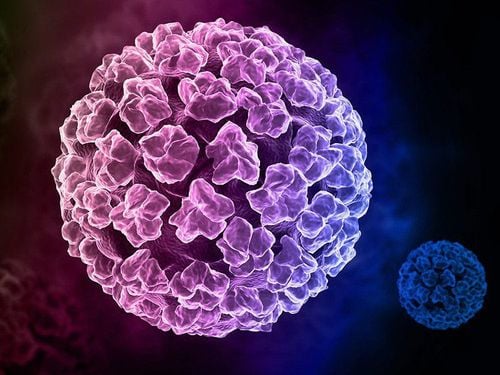This is an automatically translated article.
The article was written by Specialist Doctor I Nguyen Thi Minh Thuyen - Pathologist, Pathology Department - Vinmec Danang International General Hospital.Survival rates can tell you what percentage of people with the same type and stage of cancer are still alive for a certain amount of time (usually 5 years) after they are diagnosed. This may indicate how long you will live, but can help you better understand the likelihood of successful treatment.
Survival rates are estimates only and are often based on previous research results of a large number of people with a specific cancer, but can predict what will happen in any given case . These statistics can be confusing and may leave you with additional questions. Talk to your doctor about how these numbers might apply to you, as your doctor usually understands your situations.
1. Where do these numbers come from?
The American Cancer Society relies on information from the SEER database (S=Surveillan (surveillance), E=Epidemiology (epidemiology), EE=End Result (final outcome)), maintained by the National Cancer Institute (NCI), to provide survival statistics for different types of cancer.
The SEER database tracks 5-year relative survival rates for cervical cancer in the United States, based on how far the cancer has spread. However, the SEER database does not group cancer by FIGO stage (stage 1, stage 2, stage 3, etc.). Instead, the cancer group divides the stage into focal, regional, and distant spread:
Localized: There is no indication that the cancer has spread outside the cervix or uterus. Regional: Cancer has spread beyond the cervix and uterus to nearby lymph nodes. Distant: Cancer has spread to nearby organs (such as the bladder or rectum) or to distant parts of the body such as the lungs or bones.
2. Relative 5-year survival rates for cervical cancer
(Based on women diagnosed with cervical cancer between 2009 and 2015)
| Giai đoạn SEER | Tỷ lệ sống tương đối 5 năm |
| Khu trú | 92% |
| Vùng | 56% |
| Xa | 17% |
| Tất cả các giai đoạn SEER kết hợp | 66% |
3. Understand numbers
Women currently diagnosed with cervical cancer may have a better outlook than these numbers. Treatments for cervical cancer improve over time, and these numbers are based on women who were diagnosed and treated at least 5 years earlier.
These numbers only apply to the stage of the cancer when it was first diagnosed. It is not applied after the cancer has grown, spread, or the cervical cancer has recurred after treatment.
Survival rates are grouped based on how far the cancer has spread, but age, general health, how well the cancer responds to treatment, and other factors will also affect your outlook. friend.

Tỷ lệ sống của ung thư cổ tử cung dựa vào nhiều yếu tố
4. Questions to ask about cervical cancer
It is important that you have frank, open discussions with your cancer care team. They want to answer all of your questions, to help you make the best treatment decisions and increase your quality of life. Here are some reference questions:
4.1 When you say you have cervical cancer
What type of cervical cancer do I have? Has my cancer spread beyond the cervix? Can my cancer stage be determined and what does that mean? Will I need other tests before we can decide on treatment? Do I need to see a doctor or other medical professional? If I am concerned about the cost and coverage of diagnosis and treatment, who can help me?
4.2 When deciding on a treatment plan
What are my treatment options? What treatment do you recommend and why? How much experience do you have treating this type of cancer? Should I get a second opinion? How to do that? Can you recommend someone? What will be the goal of treatment? How quickly do we need to decide on treatment? What should I do to get ready for treatment? How long will the treatment last? How will it be? Where will it be done? What are the risks or side effects of the treatments you suggest? Are there things I can do to reduce these side effects? How might treatment affect my daily activities? Will treatment cause me to have an early menopause? Will I need hormone replacement therapy after treatment? If yes, is it safe? What is the chance that my cancer will come back with these treatment plans? What do we do if the treatment fails or if the cancer comes back? Can I have children after treatment? What are my treatment options if I want to have children in the future?
4.3 During treatment
When starting treatment, you will need to know what to expect and what to look for. Not all of these questions may apply to you, but they may be helpful:
What if treatment is on the job? Is there anything I can do to help manage the side effects? What symptoms or side effects should I tell you right away? How can I contact you at night, holiday or weekend? Do I need to change my diet during treatment? Is there any limit on what I can do? Can I have sex during treatment? Will my sex life change after treatment? What kind of exercise should I do, and for how long? Can you recommend a mental health professional if I start to feel overwhelmed, depressed, or distressed?
4.4. After treatment
Will I need a special diet after treatment? Is there any limit on what I can do? What other symptoms should I watch for? What kind of exercise should I do now? What kind of follow-up do I need after treatment? How often will I need to track and check pictures? Do I need a blood test? How will we know if the cancer has come back? What should I watch? What are my options if the cancer comes back? Along with these examples, be sure to write down some of your own questions. For example, you may want more information about recovery time. Or you can ask if you qualify for a clinical trial.
Remember that doctors are not the only ones who can give you information. Other health care professionals, such as nurses and social workers, can answer some of your questions.

Chế độ ăn uống sau khi điều trị ung thư cổ tử cung rất được quan tâm
5. How is cervical cancer treated?
Common types of cervical cancer treatments include:
Cervical cancer surgery Radiation Chemotherapy Targeted therapy Immunotherapy To meet the need for gynecological cancer screening For women, Vinmec International General Hospital currently provides a package of screening and early detection of gynecological cancer, helping to detect 4 diseases early: cervical cancer, breast cancer, uterine cancer and ovarian cancer even when the patient has no symptoms.
The subjects who should use the Gynecological cancer screening and early detection package include:
Female customers, over 40 years old Customers wishing to be able to screen for pathology of breast-gynecological cancer (neck) uterus, uterus, ovaries) Customers at high risk of cancer – especially customers with a family history of breast cancer, gynecology Women of reproductive age, perimenopause Menopause and menopause Women are having symptoms of breast cancer, gynecology such as: pain in the breast, lump in the breast, bleeding outside the menstrual cycle, abdominal pain, etc... To register for an examination and treatment at Vinmec International General Hospital You can contact Vinmec Health System nationwide or register online HERE.
Articles refer to the source: American Cancer Society
MORE:
Signs of cervical cancer women do not ignore Cervical cancer treatment in stages Causes of cervical cancer What is bow?














